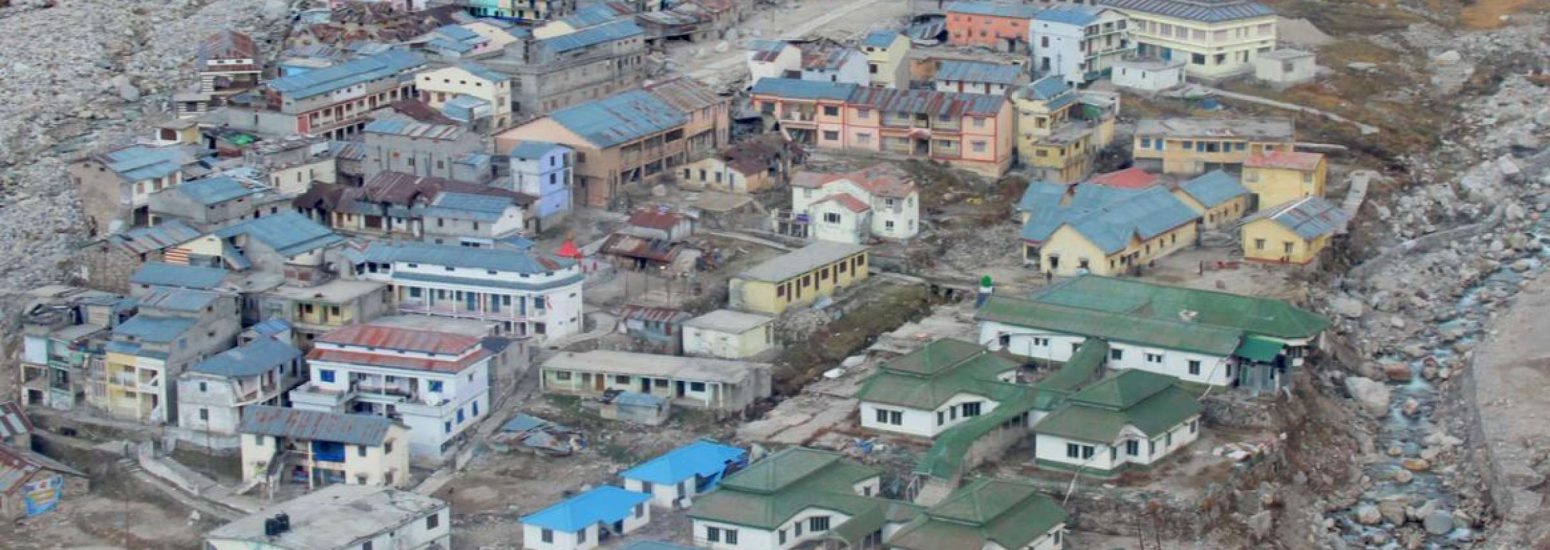India's Regional Climate Change Assessment: Navigating a Complex Landscape
By: Roxy Mathew Koll

Introduction
In the realm of climate science, few initiatives have had as profound an impact on global understanding and action as the reports produced by the United Nations’ Intergovernmental Panel on Climate Change (IPCC). These comprehensive assessments, the result of collaboration among hundreds of scientists from around the world, distill vast amounts of scientific literature into authoritative documents. The purpose of these reports is to provide a cohesive global narrative on climate change, which informs journalists, policymakers, and scientists alike. However, while these reports offer a valuable global perspective, the need for regional climate change assessments is becoming increasingly apparent.
The Unique Challenge of Regional Climate Change
Climate change is a global phenomenon, but its manifestations vary widely across different regions of the world. For instance, small island nations may be primarily concerned with rising sea levels, while land-locked tropical countries may grapple with intensifying heat waves, droughts, and floods. While the IPCC reports aim to capture a global snapshot of climate change, the complexity of this undertaking makes it logistically impossible to provide detailed assessments of regional-scale changes. Regional assessments, however, are crucial for informed policymaking and adaptation strategies, necessitating the creation of such localized reports.
India’s Climate Change Assessment
In June 2020, India released its first comprehensive climate change assessment report titled “Assessment of Climate Change over the Indian Region.” This extensive report covers every aspect of past and projected climate changes in the Indian subcontinent and the surrounding oceans. The report serves as a foundation for subsequent climate impact and risk assessments. It focuses on two standardized emissions scenarios, RCP4.5 (representing intermediate emissions) and RCP8.5 (representing high emissions). This article explores the major findings of this report, shedding light on how they align with the global-scale changes detailed in IPCC reports.
Key Findings from India’s Climate Change Assessment
Rainfall: India’s heavy dependence on agriculture makes changes in monsoon rainfall patterns a matter of great concern. The assessment reveals that the summer monsoon rainfall has declined by approximately 6% since the mid-20th century. This decline has led to an increase in the frequency and severity of droughts, particularly in central India and the Indo-Gangetic plain. While the reasons for these changes are complex, they are linked to both natural variability and anthropogenic factors, including greenhouse gas emissions and aerosol pollution. Addressing these issues is vital for securing India’s food and water resources.
Temperature:
India has experienced an average temperature rise of 0.7°C since 1901, a trend attributed to global warming. However, this rise is relatively lower than the global average due to factors like the Planck feedback and aerosol pollution. Aerosols have acted as a local “antipyretic,” temporarily mitigating temperature increases. Nevertheless, the report predicts a temperature rise of up to 2.3°C by mid-century compared to pre-industrial levels. More concerning are projections of increased heat waves and extreme temperatures, which will impact public health, agriculture, and infrastructure.
Indian Ocean Warming: The rapid warming of the tropical Indian Ocean, nearly 1°C over seven decades, has significant implications for India’s monsoon patterns. This warming has weakened monsoon circulation, reducing moisture influx into the subcontinent and leading to a decline in monsoon rainfall. Understanding these dynamics is crucial for anticipating future changes in monsoon behavior.
Sea Level Rise: Global warming-induced sea level rise poses a significant threat to India’s coastal regions. The report predicts an increase in the rate of sea level rise to 5 cm per decade, potentially causing widespread inundation and erosion of coastal areas. Coastal cities and critical infrastructure like power plants are particularly vulnerable.
Cyclones: India’s coasts, both eastern and western, are experiencing more frequent and intense cyclonic storms. Rapid intensification of cyclones due to warmer ocean temperatures is a growing concern. While cyclone behavior is complex and challenging to predict precisely, the report underscores the need for preparedness and mitigation strategies.
Implications and Call to Action
The rapid changes in India’s climate have far-reaching consequences. They stress natural ecosystems, threaten agriculture, freshwater resources, and infrastructure, and endanger public health. To address these challenges, mitigation and adaptation measures are urgently required. These actions include:
– Transitioning to renewable energy sources to reduce greenhouse gas emissions.
– Implementing green building infrastructure to combat urban heating and air pollution.
– Reducing air pollution, which can enhance human health, solar energy efficiency, and monsoon rainfall.
– Implementing water harvesting and groundwater management to restore water security.
– Improving early warning systems and forecasts to cope with climate change-related challenges.
– Promoting climate education, awareness, and research.
– Conducting vulnerability and risk assessments at the district level.
– Emphasizing equity and justice in climate change responses to protect vulnerable populations.
In conclusion, India’s regional climate change assessment report highlights the pressing need for localized, comprehensive assessments to understand and address the unique challenges faced by different regions. The findings serve as a clarion call for immediate and coordinated action to mitigate the impacts of climate change and safeguard the future of the nation. Climate change is a global issue, but solutions must be adapted to the specific needs and vulnerabilities of individual regions, and India’s assessment report serves as a crucial step in that direction.
Author

Dr Roxy Mathew Koll is a Climate Scientist at the Indian Institute of Tropical Meteorology. He did his Ph.D. in Ocean and Atmospheric Dynamics from Hokkaido University, Japan. Dr. Koll is a Lead Author of the IPCC Reports and the former Chair of the Indian Ocean Region Panel. He actively collaborates with citizen science networks, local governments, and media to bring science to society.





























